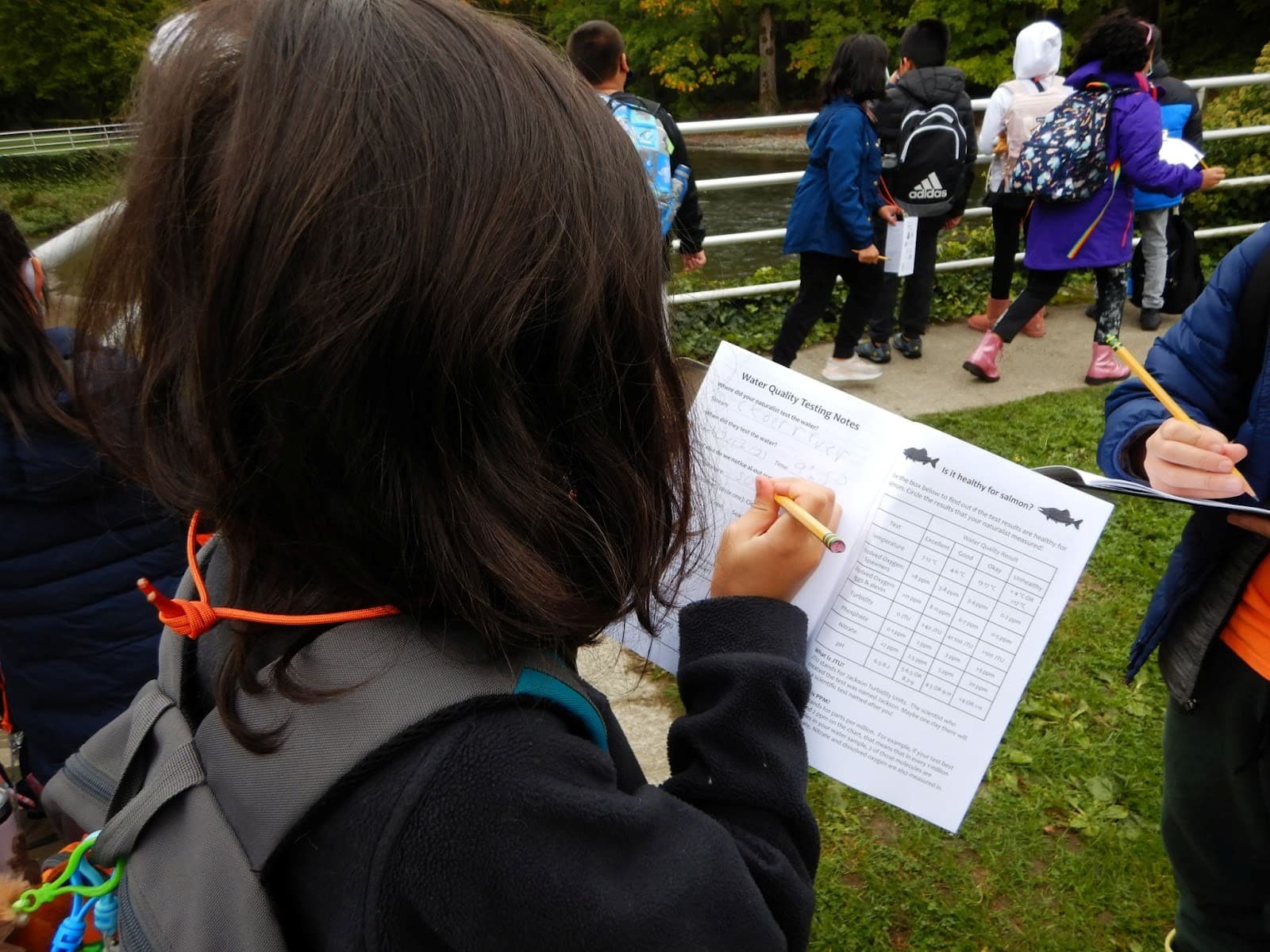During issue definition, students focus on a driving question, that is defined by the teacher, that addresses a locally relevant environmental issue, problem, or phenomenon requiring background research and investigation.
Students learn more about the issue through classroom instruction, making observations, asking questions, collecting data, conducting experiments, carrying out field investigations, talking to experts, and reviewing credible publications. Students also consider environmental policies and community practices, and reflect on personal, stakeholder, and societal values and perspectives to develop a comprehensive picture of the root causes of the environmental issue. Issue definition happens throughout the MWEE as students hone in on aspects of the issue that are most interesting or pertinent to their lives.

What is an Environmental Issue?
An environmental issue is an environmental problem, often with observable phenomena, to which community members bring a variety of perspectives. This creates a multidimensional context for student learning that explores both human and natural systems.
Phenomenon: A fact or situation that is observed to exist or happen, especially one whose cause or explanation is in question. Observable phenomena that are illustrative of environmental problems are helpful in supporting student inquiry within the MWEE framework.
- Example: Students observe that the stream behind their school periodically turns brown with sediment. They wonder why.
Problem: An interaction between humans and the environment that threatens or puts something of value to humans at risk; it often includes cause and effect relationships.
- Example: The failure of stormwater management controls in the community has allowed excessive runoff that has degraded habitat for fish and macroinvertebrates. Community members have noticed that the fishing is not as good as it used to be downstream from the school.
Environmental Issue: An environmental problem about which individuals and/or groups may have varying perspectives. The disagreement may be over how the problem is to be solved or it may be over whether or not the problem is, in fact, a problem. People disagree because of differing beliefs or values.
- Example: To address a housing shortage, there is a new residential development planned upstream from the school. This will involve the removal of an existing forest. This development has the potential to further impact the health of the stream. There is disagreement in the community about whether or not this project should be permitted.
The driving question engages students in learning about, investigating, and taking action to address an environmental issue. The driving question structures the work happening during issue definition and throughout the MWEE. The question should be open-ended, relevant to students’ lived experiences, and meet learning objectives. It guides inquiry for the investigation and prompts the development of actionable claims.
On the next page, we will dig into characteristics of a good driving question but before we do that, watch this video to see how the three case studies approach issue investigation. As you watch, think about what driving question each MWEE is addressing, how it's locally relevant, and how the teachers provide opportunities for students to learn more about the issue.
MWEE Issue Investigation Video (Transcript)
“Everything is a building-block to something else….” —Ms. Reilly.